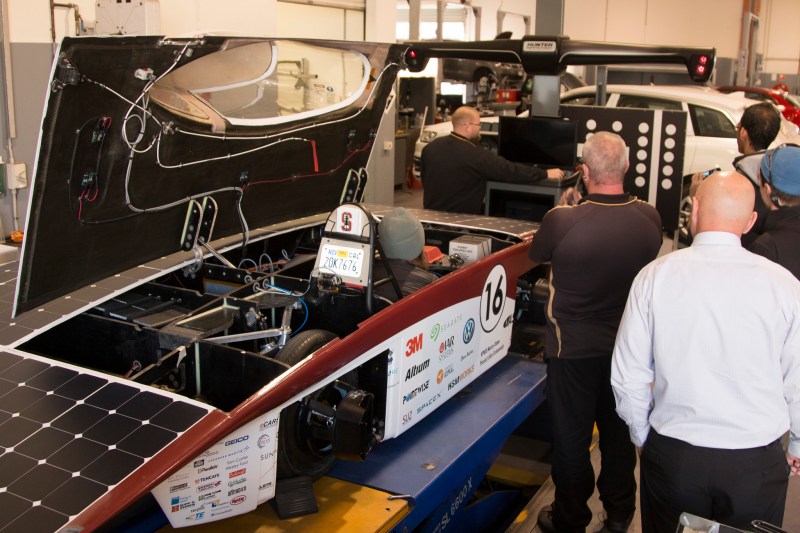In a race for sponsorships, the Stanford Solar Car Project (SSCP) must search for other sources of funding as long-time supporter Volkswagen renegotiates financial support.
Although San Jose Mercury News recently reported that Volkswagen “has pulled its blue-and-white emblem from the side of Stanford’s clean energy vehicle,” the financial situation is more ambiguous. The automaker was embroiled in a diesel emission scandal last year which may have reduced their willingness to renew their four-year support of SSCP, according to SSCP financial officer Jim Liu ’18.
However, Volkswagen’s support or lack thereof remains to be determined. For now, the team is operating on the assumption that if they do receive funding, it will be severely reduced from the previous $25,000 annual cash and in-kind support from Volkswagen which included materials and lab time.
“Our connect within Volkswagen didn’t explicitly say that they were cutting funding, and we didn’t express that to the San Jose Mercury News at all,” Liu said. “And so we’re still in conversation with Volkswagen, and we’re unsure what the result will be.”
Volkswagen spokesman Darryll Harrison said the company’s decision was not a result of the diesel controversy. Instead, the automaker decided to invest the money in Stanford’s Institute for Computational and Mathematical Engineering, according to the San Jose Mercury News article.
Historically, SSCP has been heavily sponsored by the Volkswagen Electronics Research Lab. But after being in talks since January, the team is now looking for more sponsors, especially given the costs associated with their endeavors. Designing and constructing each solar car can cost up to $1 million, including hardware, software licenses, rental vehicles and competition fees in Australia.
“We’re doing cold calls and emails, company visits, everything we could think of,” Liu said. “The whole nine yards in trying to fundraise as much as we can.”
According to team lead Kelsey Josund ’16, winning solar car teams tend to have more monetary support, although a larger budget is by no means a guaranteed victory. Even counting Volkswagen, SSCP’s biggest sponsor is by far the ASSU, which pulls fees directly from the student body.
“Solar car racing is an interesting kind of competition in that it’s not just money that lets you do well,” Josund said. “But the teams that beat us historically have budgets that are ten times ours.”
The next competition is set for October 2017, so SSCP’s business team is scrambling to obtain sponsorships, so as to allow the engineering team to start building during spring and summer quarters next year. Although motors of previous cars are reusable, Liu says that most parts such as the solar panels cannot be reincorporated into the new vehicle.
“We reuse as much as we can,” Liu said. “The motors in Arctan (the 2015 solar car) were also in Luminos, our 2013 car. They were developed in 2012, and we just had to refurbish them.”
After finishing sixth out of 29 cars last year at the World Solar Car Challenge, the team is looking forward to another competition cycle.
“We have a pretty good idea of what the cars that beat us did better than us,” Josund said. “It’s not just a matter of throwing money at the car. It’s also about putting in the effort.”
Contact Ariel Liu at aliu15 ‘at’ stanford.edu.
